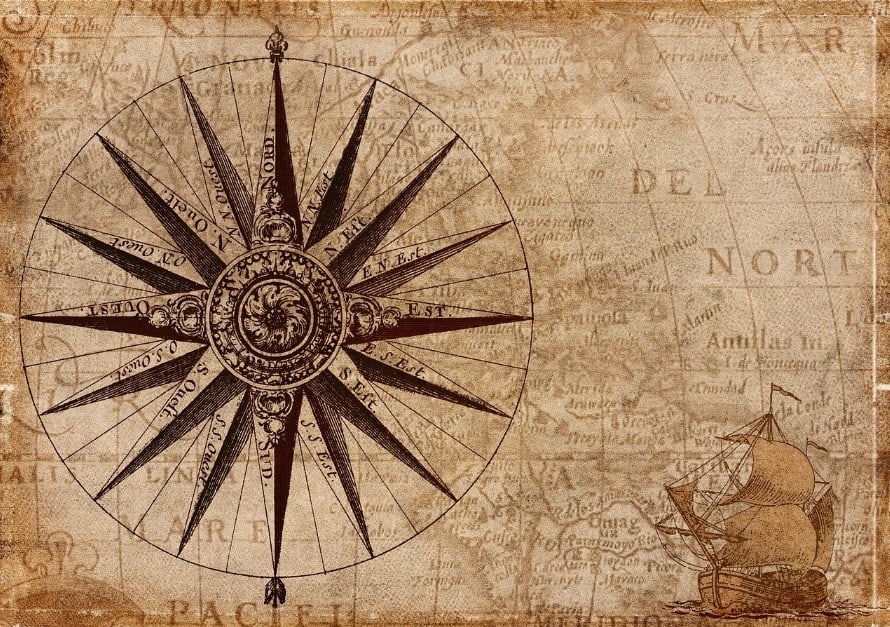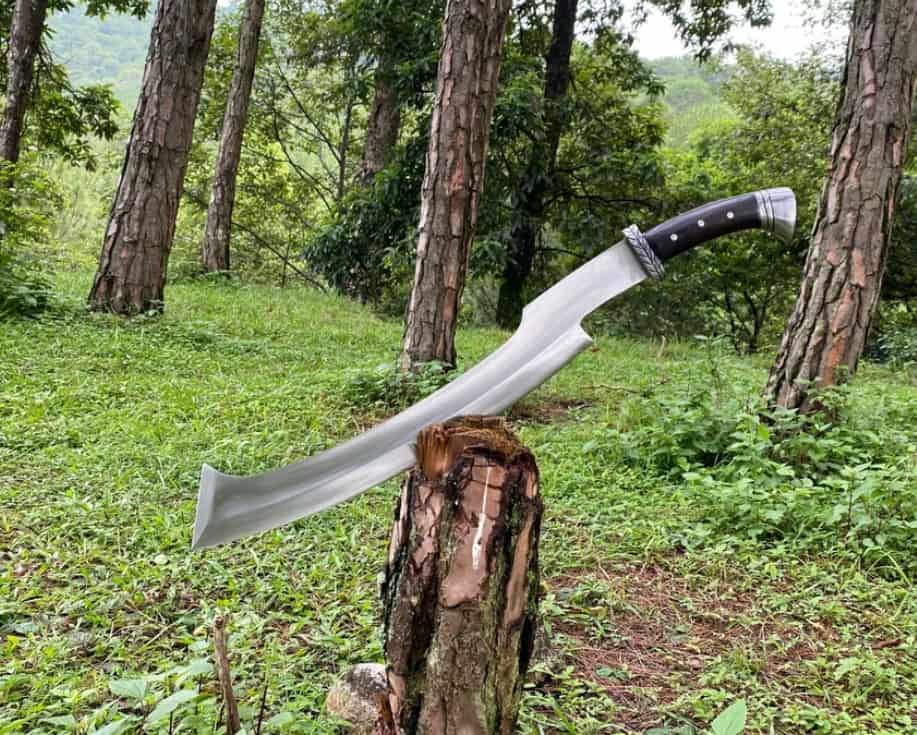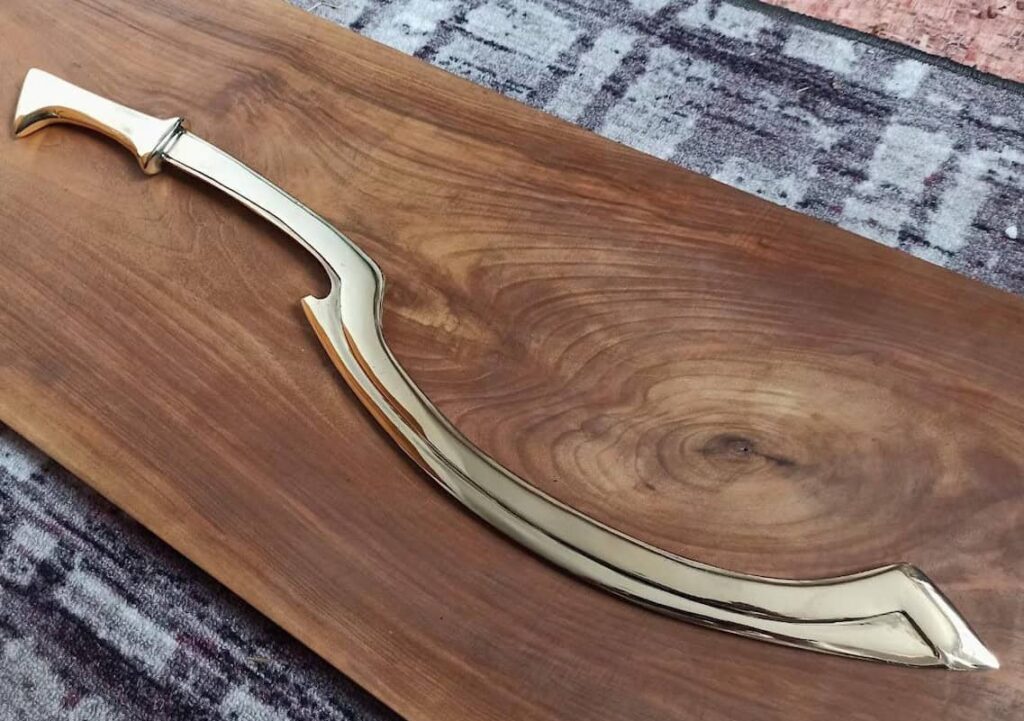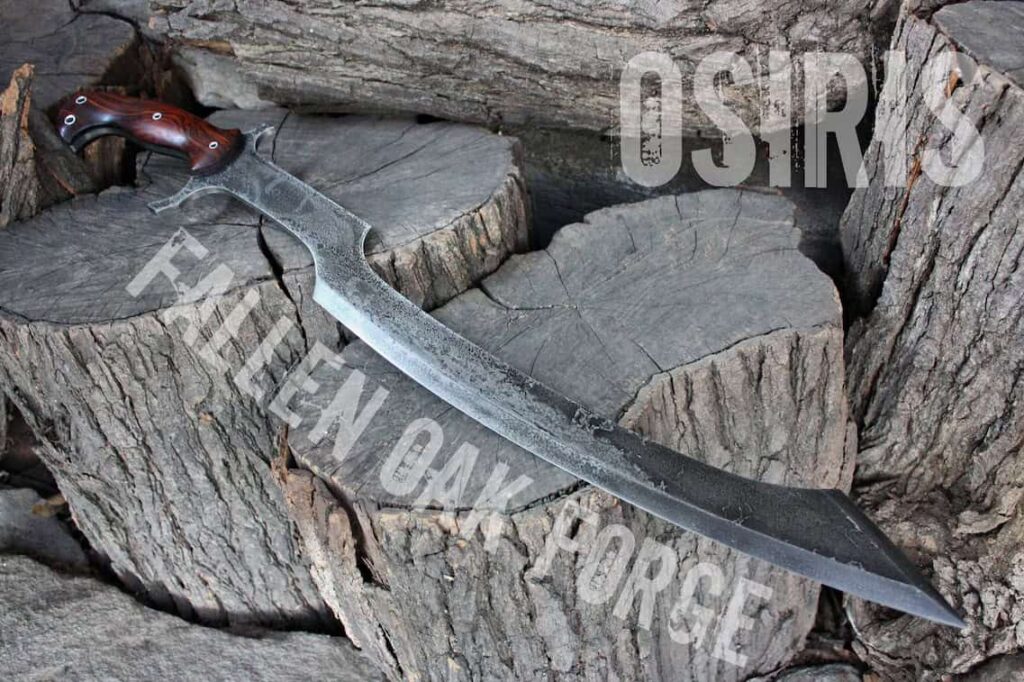What Was the Ancient Khopesh?
TLDR: The ancient khopesh was a curved, sickle-like sword used in ancient Egypt, characterized by its distinctive hook-shaped blade and primarily used for slashing and chopping in combat.
Alright, let’s talk about the ancient khopesh. This Egyptian blade is seriously cool, and I gotta say, it’s always been one of my favorites. You know how most ancient swords were straight? Well, the khopesh said “nah” to that and went with this wicked sickle shape. And it’s not just for looks – those old-school weaponsmiths knew what they were doing.
I’ve been nerding out over historical swords for years, and the ancient khopesh is like the missing link in sword evolution. It’s got this curved edge and a hooked tip that makes it super versatile. You could slash with it, sure, but you could also hook an enemy’s shield or even their arm. Pretty clever, right?
In this article, I’m gonna break down where the khopesh came from, what makes it tick, and why it was such a big deal back in the day. Trust me, by the time we’re done, you’ll see why this ancient Egyptian sword still gets sword geeks and history buffs all excited. It’s not just a weapon – it’s a piece of history you can hold in your hand.
Origins and Development of the Ancient Khopesh
You might think the ancient khopesh is all about Egypt, but its roots actually go back to ancient Sumer in the 3rd millennium BC. I’ve dug into this, and it turns out the khopesh evolved from Mesopotamian battle axes. Those early weaponsmiths were pretty clever – they started stretching out the blades, and boom, you’ve got the beginnings of the khopesh. It’s a smart move when you think about it. Back then, metalworking wasn’t what it is today, and that curved shape gave you a longer cutting edge without sacrificing strength. Straight swords of the time? They’d often snap under pressure.

Now, as trade picked up and cultures started mingling more, the khopesh found its way to Egypt. And boy, did it catch on fast. During the New Kingdom period (that’s 1570-1070 BC for you history buffs), it became a big deal in Egyptian warfare and symbolism. This was a time when Egypt was flexing its military muscles and really coming into its own culturally, so the khopesh fit right in.
I’ve spent a bit of time looking at artifacts and carvings from this period, and let me tell you, the khopesh is everywhere. Everyone from foot soldiers to pharaohs thought this weapon was the bee’s knees. It’s wild how quickly it went from being this foreign oddity to a symbol of Egyptian might. Really shows how adaptable the Egyptians were when it came to military tech. This whole process of adopting and refining the khopesh cemented its place in the top tier of ancient weapons, setting it up to be remembered long after its time had passed.
Physical Characteristics of the Ancient Khopesh
Let’s talk about what makes a khopesh a khopesh. First off, you’ve got that unmistakable sickle shape. It’s not just for show – that curve is what sets it apart from your run-of-the-mill straight sword. Most khopeshes I’ve come across are about 50-60 cm long, or 20-24 inches if you prefer. That’s a pretty handy size, not too unwieldy but long enough to give you some reach.
Now, when it comes to what they’re made of, we’re looking at bronze for the early ones. Later on, as ironworking became more common, you start seeing iron khopeshes popping up. The switch to iron was a game-changer, allowing for a stronger, more durable blade.
The structure is where it gets interesting. You’ve got your handle, obviously, but then there’s a straight section leading into that wicked curve at the end. Here’s the kicker – it’s the outer edge of that curve that’s sharpened. This design is pretty clever. The straight part gives you some familiar sword action, but that curve? That’s where the khopesh really shines. It lets you hook an enemy’s shield or limb, which is a neat trick in close combat.
I’ve held a few replicas, and let me tell you, the balance on these things is something else. The weight distribution along that curve gives it a unique feel – it’s like the blade is eager to swing. It’s no wonder these were popular for so long. The khopesh isn’t just a sword; it’s a piece of engineering that tells us a lot about how ancient warriors thought about combat.
Ancient Khopesh Function and Usage
Okay, so let’s get into the nitty-gritty of how the khopesh actually worked in combat. This bad boy is like the Swiss Army knife of ancient weapons – it’s not just a sword, and it’s not just an axe. It’s both, and that’s what makes it so darn cool.
First off, that curved design isn’t just for show. Back in the day, they didn’t have the super-strong metals we have now. So, the curve actually added strength to the blade. It’s like how a curved piece of paper is stronger than a flat one – same idea, but with bronze or iron.
Now, here’s where it gets really interesting. See that inner curve? That’s not just dead space. A skilled warrior could use it to trap an opponent’s arm or yank away their shield. I’ve tried this out with replicas (safely, of course), and let me tell you, it’s a game-changer in close combat.
But the real kicker is how it cuts. Most people think a sharp edge is all you need, but with the khopesh, it’s all about weight distribution. The curve puts more weight towards the business end of the blade. So when you swing it, you’re getting a lot more oomph behind your strike. It’s like the difference between a quick jab and a haymaker – the khopesh is definitely bringing the haymaker.
In my experience handling different types of swords, this design is pretty unique. It’s not about finesse or precision like some later swords. The khopesh is all about raw, efficient power in close-quarters combat. It’s the kind of weapon that makes you rethink everything you thought you knew about ancient warfare.
Historical Significance of the Ancient Khopesh
Now, let’s talk about why the khopesh isn’t just any old weapon – it’s a symbol of power and prestige in ancient Egypt. This thing wasn’t just for the average foot soldier; it was a big deal among the elite.
One of the coolest things I’ve come across is how the khopesh shows up in high-status graves. Take Tutankhamun’s tomb, for example. Among all the treasures and artifacts, there were khopeshes. That tells you something right there – this weapon was fit for a king, literally. It wasn’t just a tool of war; it was a symbol of royal power.
And it’s not just in tombs. The khopesh is all over ancient Egyptian artwork and hieroglyphs. You see pharaohs and gods wielding it, which really drives home its importance. It’s like the ancient Egyptian equivalent of a crown or scepter. When you see a khopesh in a carving or painting, you know you’re looking at something – or someone – significant.
I’ve spent some time studying these depictions, and it’s fascinating how consistently the khopesh is portrayed. It’s always in the hands of someone important, never just a random soldier. This consistency highlights its role as a status symbol and a mark of authority.
Decline and Legacy of the Ancient Khopesh
Alright, so all good things come to an end, and the khopesh is no exception. Around 1300 BC, this iconic blade started to fall out of favor. Now, I’ve often wondered why such a versatile weapon would go out of style. From what I’ve pieced together, it probably had to do with changes in warfare and the rise of new, more effective weapons.
But here’s the thing – the khopesh didn’t just disappear into the sands of time. Its influence lived on. Take the Greek kopis, for example. When I first saw one, I couldn’t help but think, “Hey, this looks familiar.” And I’m not the only one who’s noticed the similarities. Many sword experts reckon the khopesh might have influenced the design of the kopis and other curved swords that came later.
It’s pretty cool to trace these connections across different cultures and time periods. The khopesh might have stopped being used, but its legacy continued. It’s like the granddaddy of curved swords, passing on its DNA to future generations of blades.
In my years of studying swords (well, I guess more like playing with swords), I’ve come to appreciate how designs evolve and influence each other. The khopesh is a prime example of this. It may have fallen out of use, but its impact on sword design lasted long after the last khopesh was forged. That’s what I find so fascinating about these ancient weapons – they tell a story that spans centuries and civilizations.

Cultural Impact of the Ancient Khopesh
You know, it’s pretty wild how the khopesh has made a comeback in modern pop culture. I mean, this ancient Egyptian sword has been popping up all over the place in films and TV shows. Any time you see a movie set in ancient Egypt, chances are you’ll spot a khopesh or two. It’s become this go-to weapon for filmmakers who want to add some authentic Egyptian flair to their scenes.
But it’s not just Hollywood that’s keeping the khopesh alive. There’s a whole community of history buffs and sword enthusiasts (yeah, guilty as charged) who are super into replicas and reproductions.
These reproductions aren’t just for show, either. They’re valuable tools for understanding history. Museums use them for educational displays, and reenactors use them to bring ancient battles to life. I’ve even seen some martial arts groups experimenting with khopesh techniques, trying to piece together how these weapons might have been used in combat.
It’s pretty cool to see how this ancient weapon has found new life in the modern world. From movie props to carefully crafted replicas, the khopesh continues to capture people’s imaginations. It just goes to show that a well-designed weapon can stand the test of time – even if it’s been out of active use for over 3,000 years.
Where Can I Get My Own Khopesh?
If you’re itching to get your hands on a khopesh, there are a few ways to go about it. For quality replicas, your best bet is specialty sword shops and online retailers that cater to historical weapon enthusiasts. These replicas can range from decorative pieces to fully functional blades, depending on your preference and budget.
Kult of Athena

What I Like:
- Authentic design: This khopesh reproduction closely aligns with historic originals, providing an accurate representation of the ancient Egyptian sword.
- Durable construction: Made with C60 high carbon steel and featuring a full tang blade, this sword is built for resilience and toughness.
- Complete package: The sword comes with a genuine leather sheath with antiqued brass retaining straps and a shoulder baldric for easy carrying.
Medieval Collectibles

What I Like:
- Durable Construction: The blade is made of C60 high-carbon steel, ensuring strength and durability for practical use.
- Historical Design: The khopesh features a sickle-like blade based on ancient Egyptian weapons, perfect for reenactments and collections.
- Convenient Scabbard: It comes with a leather scabbard that includes a shoulder strap for easy carrying and secure storage.
Etsy – GurkabladeByKnife

Etsy – VikingBronze

Etsy – EverestEssenceEdge

Etsy – FallenOakForge

Final Thoughts
In conclusion, the ancient khopesh stands out as a testament to ancient ingenuity and adaptability. Its unique sickle shape and versatile functionality made it a favored weapon in Egypt, even finding a place in royal tombs like Tutankhamun’s. Handling replicas, I’ve come to appreciate its balance and clever design, which added strength and utility in close combat.
Although the khopesh fell out of use around 1300 BC, its influence persisted in later weapons like the Greek kopis. Today, it enjoys renewed interest in pop culture and among enthusiasts, proving that well-designed weapons can stand the test of time. Studying the khopesh offers valuable insights into ancient warfare and technology, reminding us of the enduring legacy of historical artifacts.
